Market Leaders in Key Vertical Spaces
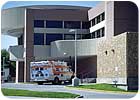

Dedicating resources to verticals — including staff, sales and marketing, financial services, customer support, and even management — helps integrators better meet their clients’ needs through increased understanding of regulations, codes and compliance issues; the needs of their customers’ customers; and the market’s opportunities and challenges. Therefore, an integrator that specializes in a vertical market, such as healthcare, can extend its name recognition and come to be perceived as the security solutions provider in that market.

We began our research by using information from our 2007 Top Systems Integrators applications, in which integrators were asked, earlier this year, to identify their top vertical markets. We also reached out to dozens of prominent industry manufacturers, asking them to name who they perceived as the leaders in these key verticals. We then compiled a matrix of companies that were cited within each vertical market — and you can imagine the list! What we found is that there was nothing close to a consensus in the physical security industry on who leads these markets.
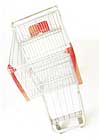
- Healthcare: Johnson Controls, Simplex Grinnell
- Retail: ADT Security Services, HSM Electronic Protection Services, Diebold
- Property Management: NetVersant Solutions, Kastle Systems
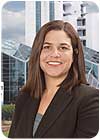
“Being a facilities company it’s very exciting to be able to do more than just facilities,” says Jennifer Stentz of Johnson Controls. “Without taking this vertical market approach, I’m not sure we would have been ahead of the game instead of just responding to it.”
Safe, Comfortable, Sustainable
In critical-mission environments such as healthcare, Johnson Controls excels through technology- and performance-based contracting.Johnson Controls’ mission in the healthcare market is to “promote a safe, comfortable, sustainable environment,” relates Jennifer Stentz, director of Healthcare Solutions at the Milwaukee-based systems integration firm.
Stentz says that about 10 years ago, an organizational change resulted in Johnson Controls aligning to vertical markets from more than just a marketing or geographical perspective, but from a field perspective.
“Allowing sales people and design engineers to focus on one specific vertical means we can go a mile deep into that one vertical market. Instead of a sales team calling on a school one day, a hospital the next day and a commercial building the next day, we allow that team to focus on healthcare 100 percent of the time,” Stentz relates.
Specialists understand the challenges, regulations, compliance issues, and “some unique innovations we can bring to that market,” she adds.
Johnson Controls is a $33 billion diversified company. The vertical market strategy includes other areas — healthcare, federal government, education and public sector — and has been applied to its Building Efficiency Group which grossed $10.2 billion in 2006 globally. The company has nearly 200 offices in North America.

Stentz estimates that among the approximately 6,500 hospitals that exist in the United States and Canada, Johnson Controls serves approximately 3,700 in some fashion.
A unique aspect of healthcare — which also includes nursing homes and assisted living facilities — is that these facilities have “a proliferation of technologies and systems,” including fire alarm, security, building automation, IT systems including wired and wireless networks, telephones, and critical clinical systems used for patient care and medical records.
“One of the things that differentiates us today is our ability to drive an integration strategy, what we call ‘technology contracting.’ As I talked about the proliferation of systems, it becomes almost overwhelming for an organization to manage that technology — from both an investment and operational perspective,” Stentz says. This creates opportunities for Johnson Controls to act as a provider of not only systems but services.
The strategy is to combine the right funding alternatives with a strategic approach and match the technical needs — taking a solutions view rather than selling a product. “If we can identify savings then we can find a way to fund the project, because the savings can pay for the investment. We’ll guarantee a return on investment,” Stentz maintains. “It’s called performance-based contracting.”
Stentz is particularly proud of Johnson Controls’ work, for the past 30 years, with the West Jefferson Medical Center in Marrero, La. It remained open through Hurricane Katrina, and less than two years later, it became the first building in Louisiana to receive an Energy Star Award from the U.S. Department of Energy’s Environmental Protection Agency. The program helps businesses and individuals protect the environment through superior energy efficiency.

Simplex Grinnell’s support for life safety at the University of Massachusetts Medical Center was a factor in the facility obtaining a very high compliance rating in their JCAHO audit, explains Chris Woodcock of Simplex Grinnell.
From Life Safety to ‘Everything Safety’
Its roots are in life safety, but SimplexGrinnell has evolved to offer solutions that range from infant protection to mass notification.SimplexGrinnell views its coverage of the healthcare market from a much broader perspective than a traditional systems integrator, says Tom Giannini, CPP, the company’s director of security marketing. “In healthcare — besides access control, video, and emergency communications — we’re also providing fire detection and alarm systems, fire sprinkler systems, and healthcare-specific fire suppression systems. We also provide patient-to-staff communication systems.”
Healthcare is SimplexGrinnell’s No. 1 market. Total company revenue, including all markets, is approximately $2 billion annually, of which “a significant portion is tied to the healthcare market,” Giannini says.
The Boca Raton, Fla., based corporation also offers two other types of systems to its healthcare clients: infant protection and patient wandering systems. Infant protection systems are integrated into the overall security solution so customers can leverage the information “and provide a more robust environment for their customers,” Giannini says.
All in all, SimplexGrinnell points out that it can work effectively with a healthcare customer “irrespective of the size or scope of the patient care.
Naturally, services that support the systems are a major component of SimplexGrinnell’s value. These include testing and inspection, preventive maintenance, 24/7 emergency service, and central monitoring. “That’s part of the overall solution,” notes Chris Woodcock, director of marketing communications at SimplexGrinnell.
SimplexGrinnell today is a security solutions provider with approximately 150 North American locations. Its roots are in the fire detection/suppression and alarm system industry. This evolved with the needs of the marketplace, and SimplexGrinnell continued to add systems and solutions to become a total security and life safety provider. Simplex was acquired by Tyco in 2001, and then merged with Grinnell, another Tyco-owned company.
SimplexGrinnell counts about 5,000-plus healthcare customers. These include: Dana Farber Cancer Institute, Boston; University Hospital, Cleveland; Van Andel Institute, Grand Rapids, Mich.; Mayo Clinic and Hospital, Minneapolis and Phoenix; University of California, Irvine Medical Center.
The people at SimplexGrinnell have been significant contributors to the development of life safety codes, Giannini says. “We’ve participated at the committee level which determines those codes in both the National Fire Protection Association (NFPA) as well as the National Fire Sprinkler Association (NFSA), and because of our involvement in the development of those codes, through that leadership position we’ve been able to shape the solutions and services that are used in the healthcare industry,” he explains.
The company’s viewpoint was that it should share its employees’ experience and education in order to benefit the community-at-large. Among SimplexGrinnell’s 11,500 employees, more than 1,000 are NICET or Microsoft certified, or certified through the Canadian Fire Alarm Association. SimplexGrinnell also holds a company-level designation as a Microsoft certified partner for networking infrastructure, Giannini says.
Giannini believes new growth in the healthcare market will be derived from the fact that more and more states are adopting mandatory sprinkler systems for facilities. This provides SimplexGrinnell with a pull-through opportunity to sell additional security systems.
SimplexGrinnell also offers mass notification and emergency communications systems as part of its overall life safety solutions. Giannini says that NFPA 72 is incorporating more mass notification requirements and that as the life safety code achieves wider adoption in the building codes, there will be an increase in the requirement to have such systems.
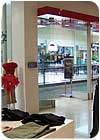
In a retail application, ADT’s UltraLink Alarm Management panel (on rear wall of store) allows store personnel to monitor and record EAS alarm activity at the exit to the store.
Smart & Secure
ADT’s technologies for the retail market sector address business intelligence as robustly as anti-theft and loss prevention.ADT Security Services Inc., based in Boca Raton, Fla., is the No. 1 ranked security provider in the United States. Retail is ADT’s largest commercial vertical market. In fact, the retail sector comprised $0.5 billion of ADT North America’s commercial sales of $2.2 billion (excluding international and residential sales).
The firm’s long history among retailers stems from the burglar and fire alarm market. Then in 2001, ADT purchased Sensormatic Electronics Corp., a leading provider of electronic anti-theft and loss prevention systems for retailers. The company’s electronic article surveillance technology (EAS) had been applied to retail applications since the early 1970s.
Today, ADT counts more than 80 percent of the top 200 retailers in North America as its customers. ADT offers retailers a full range of products from digital cameras to data analytic software. “This provides them with true business intelligence and can give them a full picture of their operation store-by-store and region-by-region,” says Lee Pernice, director of vertical markets for ADT.
Many of the products ADT offers retail customers do much more than loss prevention duty. Cameras function as an integral part of the security system, but also can be used to monitor staffing levels, overlook the status of merchandise displays, and monitor customer service. People-counting technology can determine the number of customers entering a store and communicate the information to corporate headquarters to help managers with staffing levels, marketing initiatives and more. Data analysis software can provide information about purchasing trends.
ADT’s solutions are very effective at deterring and reducing both shoplifting and employee theft. Product offerings have become more sophisticated at providing retailers with business intelligence.
ADT recently worked with a major global music and entrainment retailer, which sells CDs, DVDs, videos and games, books, digital hardware and clothing — all popular, high-value goods. The challenge was to protect these items from theft while minimizing restrictions to customers. ADT worked to tailor an integrated security system with data feedback that would provide valuable management information.
The majority of the retailer’s stores have long used ADT-installed CCTV and EAS systems to reduce product loss and shrinkage. Now there was the need to integrate these systems and develop more advanced approaches to reduce losses.
ADT installed “Smart EAS” in 13 of the retailer’s mega stores. Smart EAS closes the loop between what happens at the entrance/exit of a store, the staff response to alarm situations, and management of information. Information recorded by Smart EAS readers can be downloaded, e-mailed or sent by SMS to any authorized party.
“The acousto-magnetic source tagging technology developed by ADT is seen by many as offering the best detection rates in the industry, and has created a breakthrough in preventing theft of portable high-resale-value goods like CDs and DVDs,” Pernice maintains.
The successful conclusion of last year’s trial has proven its return on investment potential and the retailer now intends to roll out implementation of the new integrated system across the rest of its chain.

HSM is working with The Sports Authority (TSA) in converting the intrusion and fire alarm systems for more than 100 of their retail locations from two other alarm companies.
Keeping Score
HSM’s performance scorecard, eServices, and effective technology solutions are strong differentiators in the retail sector.HSM Electronic Protection Services, a Stanley Works Company, has a wide portfolio of solutions and services for almost every market segment in the industry. Retail is the company’s largest vertical market segment in its national account sales channel; approximately 40 percent of total new sales are attributed to retail national-account customers. The company serves more than 20,000 retail locations in North America, and maintains that it holds the No. 2 position in national accounts for this segment.
“The retail market is a critical element of HSM’s growth strategy for not only our national account sales, but for our core commercial sales, as well,” relates Tony Byerly, senior vice president of Sales, Marketing & National Accounts at HSM. “We continue to develop new sales tools to assist us in continuing to grow our retail penetration across the United States.”
The company’s work in the retail sector dates back to the 1960s. However, in 1978 the company established a national accounts program, which focuses on key vertical markets; the retail sector generates the largest share of that revenue.
HSM’s program provides a single point of contact, standardized systems and services, project management, program management, dedicated customer service support and several value-added services specifically for these customers.
“One of our first clients was Kohl’s department stores. In 1962 we installed a security system for Kohl’s first store located in Brookfield, Wis. Today, 45 years later, Kohl’s is one of our top national account retail customers,” Byerly says. “In addition, a key acquisition was made by HSM to further position us as the No. 2 provider in the national account retail space in 2005 when we purchased National Alarm Pro (NAP). NAP was solely a provider in the retail market.”
For nearly all of its retail clients, HSM provides security solutions for the corporate headquarters and the hundreds to thousands of store locations.
“Although we do not require our customers to use our services exclusively for all their locations, we find that many do so because of our operational excellence, national coverage, National Account Program, project management, eServices, rich portfolio of services and our commitment to the unique needs of retailers,” Byerly explains.
The company’s client list includes global retail leaders, national retailers, regional companies and local businesses, such as The Sports Authority, Office Depot, Costco, The Sharper Image, Sterling Jewelers, OfficeMax, Ritz Cameras, Kohl’s, The Disney Stores, UPS Stores and Hallmark.
HSM maintains that one of its key advantages is its eServices, such as eDataManager and eAccountManager. These unique real-time, Web-based tools provide retailers with comprehensive data reports for managing their loss prevention programs.
“Very exciting right now is the introduction of our two-way audio solutions, bolstering our video monitoring services — called eVideoManager. Our retail customers are very enthusiastic about the ability for HSM monitoring specialists (shown at left) to not only look into their locations with eVideoManager for alarm verification, open/close supervision, guard tour and escort, but also the ability for HSM to talk, via two-way audio using IP connectivity with on-site employees, customers, or intruders,” Byerly explains.
HSM also offers the HSM National Account Performance Scorecard. This quarterly scorecard details HSM’s performance on five customer touch points — account management, installation, service, monitoring and billing — for each national account customer.
In 2007, HSM will exceed $200 million in revenue.
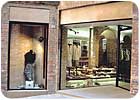
‘Safe’-ty Is in Its Roots
Diebold tackles the growing retail market with top-of-the-line products backed with exceptional service.Diebold’s share of the retail market is growing rapidly, as are revenues in the global security division as a whole. Security division revenues were $570 million in 2004, $661 million in 2005, and $775 million in 2006, relates Ann Poston, marketing specialist. Security represents about 30 percent of Diebold’s companywide revenue.
Diebold began to focus on the retail market in 2001, and now counts 50 national retailers among its customers.
According to Jack Finefrock, vice president, retail security solutions group, the Diebold differentiator is its national footprint of more than 4,100 Diebold-employed service associates. Diebold service technicians are trained on all Diebold products and services, including installation, preventative maintenance and repair.
“We don’t just ‘do projects.’ We build ongoing relationships with our customers,” Finefrock explains. “That means every day we’re installing multiple sites across the country with integrated security systems that meet our customer’s unique needs.”
As an integrated security solution provider, Diebold provides the physical security products — from safes to alarm systems, from door controls to cameras — as well as services, such as award-winning monitoring.
Diebold’s Event Monitoring Center was honored as Central Station of the Year by the Central Station Alarm Association (search using key words “Monitoring Mentors” online at www.sdmmag.com). The monitoring center is also Five Diamond Certified, UL listed, and fully redundant. Steve Ipson is the director of Diebold’s monitoring services, and the Event Monitoring Center is located in Uniontown, Ohio.
The power of having an integrated security solution is offering video-verified event monitoring, Finefrock says. “It’s a huge value to retailers, especially in the world of false alarm fines.”
For example, if a retail store employee would mistakenly trigger a duress alarm, the event would be received by an operator at the monitoring center. Next, before an action would be taken to dispatch authorities, the operator would remotely view, listen and talk to the site to verify whether an actual alarm occurred.
“Retailers save hundreds of thousands of dollars of false alarm fees by having that eye-in-the-sky verification of what’s going on in that store,” Poston says.
Another aspect of Diebold’s monitoring service is door control. For example, the event monitoring center can act as an overnight supervisor, letting in certain vendors remotely to the store and verifying their length of stay.
“Our security/loss prevention solutions are engineered for effective integration and effectiveness, but the true value lies in our people,” Finefrock says. “Our sales team serves as consultant to our customers; our installation project teams are dedicated to on-time openings; our technicians manage response times that exceed industry norms; and our monitoring operators serve as an extension of our customers’ operations.
“We provide highly customizable solutions to meet the individual needs of our customers so they can spend more time on the other important aspects of their jobs. That’s the Diebold value,” Finefrock relates.
Diebold’s reputation for protecting the assets of financial institutions stemmed from the Great Chicago Fire. In 1871, more than 1,200 buildings were lost to the fire. In the ashes, 878 Diebold-manufactured safes were found intact, each with its contents unharmed.
Diebold took that expertise and leveraged it into other vertical markets, which today include financial, retail, commercial and government. Diebold is ranked No. 4 on SDM’s Top Systems Integrators Report.

Covering the Fortune 500 & Neighbors
Fortune 500 property management firms are a key component of growth for NetVersant Solutions — a voice, video, and data communications company.The property management/corporate market is within NetVersant Solutions Inc.’s top three vertical specialties in terms of revenues and strategic focus, says Carey Boethel, CPP, vice president — electronic security systems, of Houston-based NetVersant.
Boethel explains that “the two primary allures of this market are the long-term relationships that are formed with property managers and the referrals that result within their tenant base.” As leased space changes occupancy, the new tenant often seeks a referral for a security provider from the landlord.
“By fostering longstanding relationships with landlords, NetVersant ensures that it is the referral,” Boethel says.
NetVersant’s 2006 North American revenue from security systems integration was $45 million. The firm, which ranks No. 16 on SDM’s Top Systems Integrators Report, is a “national provider of comprehensive and integrated network infrastructure solutions…[with] a complete range of voice, video, and data communications services,” as stated on its Web page.
NetVersant’s involvement in the property management vertical market is a core part of the company’s strategic growth plan. Its largest customer demographic is Fortune 500 companies; targeting their leased branch offices and built-to-suit needs via the property management vertical is a logical pursuit.
The company serves more than 50 property management companies nationwide, including Hines, CBRE, Cushman & Wakefield, Trammell Crow, Tishman Properties, Maguire Properties and Thomas Properties.
NetVersant’s vertical market strategy includes a specialized team that customizes solutions for the property management market.
“Each member of this team possesses strong consulting experience in the property management vertical and has designed security solutions for some of the world’s most prominent mixed-use structures, represented property managers in ownership and leasing transactions, and performed countless real property risk analyses.
“This specialized team understands not only electronic security systems, but also security operations, business continuity planning, disaster recovery and other critical issues being faced by today’s property managers,” Boethel relates. “NetVersant speaks ‘the language’ and thoroughly understands the needs of customers. Our approach is to create demand for our services by educating customers about industry best practices and innovative ways to holistically improve security.”
Boethel explains that NetVersant’s method enables its vertical market team to understand the landlord/tenant relationship and the service provider’s role in helping make it successful.
With an eye on the future, the growth potential in the property management market is tremendous, Boethel believes, particularly in low- and mid-rise structures, as well as outlying class B and C properties.
“Most of the Central Business District class A properties have already addressed security on a portfolio-wide basis, following escalated tenant concerns after September 11. However, the value proposition for less prominent properties is different,” Boethel explains. “Those customers will continue to embrace opportunities to reduce operating expenses while simultaneously enhancing security and safety. Today’s emerging IP technologies and remotely managed solutions, such as hosted access control and off-site video monitoring, effectively address both needs.”

Since 1972, Kastle Systems has been providing managed access control systems to the property management market, and has since expanded to include integrated security/video surveillance solutions.
Location, Location, Location
On-location security system management and maintenance services distinguishes Kastle Systems in the property management market.Kastle Systems, Arlington, Va., was founded in 1972 to create customized electronic security systems for commercial office buildings. The firm ranks as No. 13 on SDM’s Top Systems Integrators Report, with nearly $60 million in annual 2006 revenue.
According to president Gene Samburg, Kastle pioneered the concept of outsourcing to experts the performance of ongoing system management. The philosophy behind this concept is that security systems would fail without an expert to run them on an ongoing basis. Therefore, a service-based business was developed to help its clients run an effective security system, including the functions of ongoing programming, operations, administration, monitoring, and changes/upgrades.
Today Kastle operates eight offices; in addition to its northern Virginia headquarters, Kastle has locations in Houston; Philadelphia; Dallas; Sydney, Australia; Los Angeles; New York; and Chicago.
Kastle has approximately 1,700 properties and 289 million square feet of office space under contract. Clients include: Athenian Properties LLC, Brandywine Realty Trust, CB Richard Ellis, Cushman & Wakefield, Fisher Brothers, Grubb & Ellis, Matan Property Management, New Boston Management Services, Potomac Development Corporation, Simon Property Group and Trammell Crow.
Both property managers and tenants are offered a wide range of security services that are engineered into a customized system. Services for landlords include functions such as:
- HVAC Link — a convenient link for an authorized cardholder to turn on the after-hours air conditioning remotely.
- Elevator Link — a card reader access system for elevators.
- Emergency Link — allows buildings to be locked down immediately.
- Monitor Link – providing 24-hour central station monitoring of alarms.
- Directory Link — a touchscreen building lobby directory system that is integrated with Kastle’s central database.
- Visitor Link — permits on-site security staff to process visitors by viewing information and instructions contained in the Kastle database.
- Entry Link — through a combination of readers, electric locks and hotline telephones, all access points are controlled and monitored simultaneously from Kastle’s remote operations center.
- Audio Link — building owners and managers can retrieve and play back digitally recorded calls made to Kastle’s remote operations center.
- Video Link — allows video recording, storage and retrieval of on-site video security cameras through Kastle’s Web site.
- Parking Link — controls vehicle access to and from a parking facility.
Looking for a reprint of this article?
From high-res PDFs to custom plaques, order your copy today!




